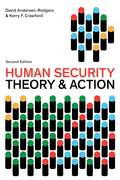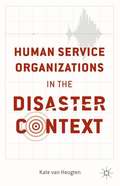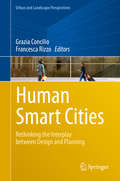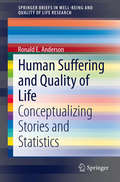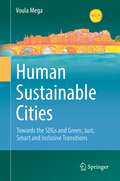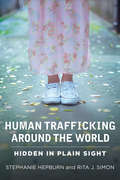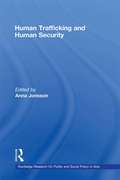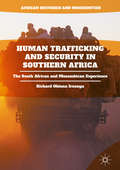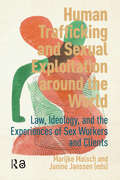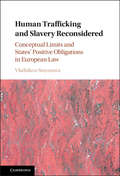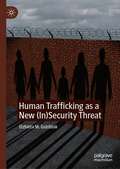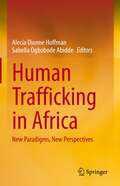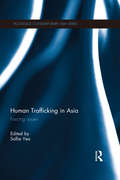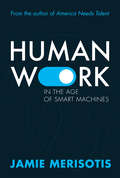- Table View
- List View
Human Security: Securing East Asia's Future
by Benny Teh Cheng GuanHuman security is becoming increasingly pronounced in recent years due to changes in the security landscape of world politics. Yet, inter-state relations have continued to dominate security concerns in East Asia. This has, unfortunately, eluded the broader understanding of issues and challenges facing the peoples of East Asia. Home to nations with rapid economic growth and development, East Asia is at the core of what some individuals have termed as the coming Asian Century. Years of economic liberalization and exposure to globalization have permitted the region to achieve high levels of interconnectedness from within and without in unprecedented ways. This has certainly reduced state control and opened up spaces for cross-border human activities. While economic wealth have increased substantially over the years, it has also brought about bigger income disparities, unsustainable safety nets and a surge in social problems from health issues to migratory concerns that threaten the safety and well-being of individuals. Human Security: Securing East Asia's Future timely examines the fundamental issues causing human insecurities and evaluates the extent of which human security plays a role at the state and regional levels. Covering the different areas of threats to humans and applying case study materials, this volume provides an intellectual mix of perspectives that captures the relationship between people, state and region. This book will be of interest to those studying traditional and non-traditional security/threats, Asian human development and critical policy analysis.
Human Security: Theory And Action
by David Andersen-Rodgers Kerry F. CrawfordHuman security refers in its broadest sense to the protection of individuals from harm. Human Security: Theory and Action explores the theory and application of concepts central to this notion of security. It examines the conceptual roots of human security, connecting its origins to its applications and challenges in war and peacetime. With a unique focus on the evolving notion of responsibility for security, the text introduces the critical questions and priorities that underpin policies and actions.
Human Service Organizations in the Disaster Context
by Kate Van HeugtenHuman Service Organizations in the Disaster Context explores the efforts of human service practitioners to support communities facing the impacts of large-scale hazardous events. Using the stories of frontline workers and managers who lived through devastating earthquakes in Canterbury, New Zealand in 2010 and 2011, and drawing on international research and sociological theory, van Heugten astutely analyses the challenges and opportunities that arise. In the immediate aftermath of disasters, there is often a surge in altruism giving rise to hope for improved social cohesion. This hope wanes when negative impacts fall unequally on people living in poverty and other vulnerable populations. Political, financial, and professional interest groups vie for power and local citizens' voices are frequently overruled. Human service workers act as boundary spanners, networking between organizations to draw attention to the concerns of vulnerable people, and to advocate for human rights and social justice.
Human Services Contracting: A Public Solutions Handbook (The Public Solutions Handbook Series)
by Lawrence Martin Robert A. ShickIn the last 35 years, governments around the globe have increasingly contracted with nonprofit and for-profit entities designed to provide a portion of the public sector’s portfolio of goods and services. This trend can be traced to a variety of factors, including perceived or actual economic efficiencies in outsourcing goods and services, values concerning the role and size of government in society, and the financial and organizational constraints of many government entities. In the United States, child welfare services adopted a pro-contracting approach early, and a variety of other human services have followed suit, including mental health care, job training, homeless services and others. Although there is strong evidence to suggest that human service contracting is growing over time, scholarship continues to lag on topics related to human service contract management, policy implementation and innovation, performance-based contracting and evaluation. This new volume in the Public Solutions Handbook series is the first volume-length treatment of human services contracting issues, integrating both policy and practice, and exploring a broad range of issues that includes the fields of history, growth, innovations, results and outcomes, best practices and the future of government human service contracting. Chapters in this book examine specific human service contracts, both in the U.S. and abroad, geared to practitioners in the public sector—from local government service contractors to municipal employees—as well as MPA students and those enrolled in courses on intergovernmental relations and nonprofit management.
Human Services in Contemporary America (Ninth Edition)
by William R. BurgerDesigned for introductory college courses in human services, mental-health technology, social work, community mental health, and other human services programs.
Human Smart Cities
by Grazia Concilio Francesca RizzoWithin the most recent discussion on smart cities and the way this vision is affecting urban changes and dynamics, this book explores the interplay between planning and design both at the level of the design and planning domains' theories and practices. Urban transformation is widely recognized as a complex phenomenon, rich in uncertainty. It is the unpredictable consequence of complex interplay between urban forces (both top-down or bottom-up), urban resources (spatial, social, economic and infrastructural as well as political or cognitive) and transformation opportunities (endogenous or exogenous). The recent attention to Urban Living Lab and Smart City initiatives is disclosing a promising bridge between the micro-scale environments, with the dynamics of such forces and resources, and the urban governance mechanisms. This bridge is represented by those urban collaborative environments, where processes of smart service co-design take place through dialogic interaction with and among citizens within a situated and cultural-specific frame.
Human Suffering and Quality of Life
by Ronald E. AndersonThis briefs on human suffering adds to human understanding of suffering by contextualizing both stories and statistics on suffering, while showing that suffering adds a useful perspective to contemporary thought and research on quality of life, social well-being, and measures of societal progress. The scholarship on suffering is made more comprehensible in the book by using nine different conceptual frames that have been used for making sense of suffering. The primary focus of this work is with the last frame, the quality of life frame. Overall, this chapters show how the research on quality of life and well-being can be enhanced by embracing human suffering.
Human Sustainable Cities: Towards the SDGs and Green, Just, Smart and Inclusive Transitions
by Voula MegaThis book argues that accelerating action toward sustainability for and by cities and their inhabitants can make a huge difference to humanity’s endeavor to recover from current crises and build a sustainable future. It sheds light on cutting-edge concepts and actions toward sustainability that can taken by and for cities and with citizens. In this book, author Voula Mega takes the reader on a journey inside and across cities and highlights efforts toward a paradigmatic shift that reconciles human systems with nature. Leadership, education, innovation, trust and citizen empowerment all play a crucial role for the co-invention of a new model that balances human well-being, sustainable prosperity and the future of the planet. Building on robust evidence and inspired by best practices, Human Sustainable Cities offers compelling messages and convincing advice to all stakeholders who are striving to overcome crises, speed up the path toward resilience and preparedness and bounce forward better.
Human Trafficking Around the World: Hidden in Plain Sight
by Rita Simon Stephanie HepburnThis unprecedented study of sex trafficking, forced labor, organ trafficking, and sex tourism across twenty-four nations highlights the experiences of the victims, perpetrators, and anti-traffickers involved in this brutal trade. Combining statistical data with intimate accounts and interviews, journalist Stephanie Hepburn and justice scholar Rita J. Simon create a dynamic volume sure to educate and spur action.Hepburn and Simon recount the lives of victims during and after their experience with trafficking, and they follow the activities of traffickers before capture and their outcomes after sentencing. Each chapter centers on the trafficking practices and anti-trafficking measures of a single country: Australia, Brazil, Canada, Chile, China, Colombia, France, Germany, India, Iran, Iraq, Israel, Italy, Japan, Mexico, Niger, Poland, Russia, South Africa, Syria, Thailand, the United Arab Emirates, the United Kingdom, and the United States. Examining these nations' laws, Hepburn and Simon reveal gaps in legislation and enforcement and outline the cultural norms and biases, societal assumptions, and conflicting policies that make trafficking scenarios so pervasive and resilient. This study points out those most vulnerable in each nation and the specific cultural, economic, environmental, and geopolitical factors that contribute to each nation's trafficking issues. Furthermore, the study also highlights common phenomena that governments and international anti-traffickers should consider in their fight against this illicit trade.
Human Trafficking Is a Public Health Issue: A Paradigm Expansion in the United States
by Makini Chisolm-Straker Hanni StoklosaThis clear-sighted reference examines the public health dimensions of labor and sex trafficking in the United States, the scope of the crisis, and possibilities for solutions. Its ecological lifespan approach globally traces risk and protective factors associated with this exploitation, laying a roadmap towards its prevention. Diverse experts, including survivors, describe support and care interventions across domains and disciplines, from the law enforcement and judicial sectors to community health systems and NGOs, with a robust model for collaboration. By focusing on the humanity of trafficked persons, a public health paradigm broadens our understanding of and ability to address trafficking while adding critical direction and resources to the criminal justice and human rights structures currently in place. Among the topics covered:Children at Risk: Foster Care and Human TraffickingLGBTQ Youth and Vulnerability to Sex TraffickingPhysical Health of Human Trafficking Survivors: Unmet EssentialsResearch Informing Advocacy: An Anti-Human Trafficking ToolCaring for Survivors Using a Trauma-Informed Care FrameworkThe Media and Human Trafficking: Discussion and Critique of the Dominant NarrativeHuman Trafficking Is a Public Health Issue is a sobering read; a powerful call to action for public health professionals, including social workers and health care practitioners providing direct services, as well as the larger anti-trafficking community of advocates, prosecutors, taskforce members, law enforcement agents, officers, funders, and administrators. “An extraordinary collection of knowledge by survivors, academics, clinicians, and advocates who are experts on human trafficking. Human Trafficking is a Public Health Issue is a comprehensive offering in educating readers on human trafficking through a multi-pronged public health lens.”Margeaux Gray: Survivor, Advocate, Artist, Public Speaker
Human Trafficking and Human Security (Routledge Transnational Crime and Corruption #Vol. 4)
by Anna JonssonHuman trafficking, and the related problems of organised crime and prostitution, has become a serious problem for post-Soviet countries since the dissolution of the Soviet Union. Human trafficking has a major impact on the countries of origin, the destination countries and the countries of transit, and is a concern for those studying population and migration, economics, politics, international relations and security studies. This book examines human trafficking from post-Soviet countries, exploring the full extent of the problem and discussing countermeasures, both local and at the global level, and considering the problem in all its aspects. It focuses in particular on the experiences of the Baltic Sea region, setting out the nature of organised crime and the full range of threats against society.
Human Trafficking and Security in Southern Africa: The South African and Mozambican Experience (African Histories and Modernities)
by Richard Obinna IroanyaThis book investigates the links between human trafficking and national security in Southern Africa. Human trafficking violates borders, supports organised crime and corrupts border officials, and yet policymakers rarely view the persistence of human trafficking as a security issue. Adopting an expanded conceptualisation of security to encompass the individual as well as the state, Richard Obinna Iroanya lays the groundwork for understanding human trafficking as a security threat. He outlines the conditions and patterns of human trafficking globally before moving into detailed case studies of South Africa and Mozambique. Together, these case studies bring into focus the lives of the ‘hidden population’ in the region, with analysis and policy recommendations for combating a global phenomenon.
Human Trafficking and Sexual Exploitation around the World: Law, Ideology, and the Experiences of Sex Workers and Clients
by Marijke Malsch Janine JanssenSex work is often called the oldest profession in the world. It manifests itself in a plethora of forms. A move to private locations is now taking place: contacts are established via the Internet and meetings take place at appointed places. This makes it more difficult to monitor forced work, and exploitation therefore risks remaining undetected. This book presents empirical findings regarding exploitation in various countries, considering sex workers, traffickers and clients, and the fight against human trafficking. Countries differ vastly in their legislative approaches, ranging from highly repressive to very liberal. This volume asks whether the ongoing process of making and changing laws is sufficiently effective in fighting human trafficking. Other interventions could obtain better outcomes, such as promoting more independence among women and helping trafficked individuals to get out. Less ideology and more attention to the facts of exploitation and sex work might help to achieve these aims.
Human Trafficking and Slavery Reconsidered
by Vladislava StoyanovaBy reconsidering the definitions of human trafficking, slavery, servitude and forced labour, Vladislava Stoyanova demonstrates how, in embracing the human trafficking framework, the international community has sidelined the human rights law commitments against slavery, servitude and forced labour that in many respects provide better protection for abused migrants. Stoyanova proposes two corrective steps to this development: placing a renewed emphasis on determining the definitional scope of slavery, servitude or forced labour, and gaining a clearer understanding of states' positive human rights obligations. This book compares anti-trafficking and human rights frameworks side-by-side and focuses its analysis on the Council of Europe's Trafficking Convention and Article 4 of the European Convention on Human Rights. With innovative arguments and pertinent case studies, this book is an important contribution to the field and will appeal to students, scholars and legal practitioners interested in human rights law, migration law, criminal law and EU law.
Human Trafficking as a New (In)Security Threat
by Elżbieta M. GoździakThis book challenges the rhetoric linking ‘war on terror’ with ‘war on human trafficking’ by juxtaposing lived experiences of survivors of trafficking, refugees, and labor migrants with macro-level security concerns. Drawing on research in the United States and in Europe, Goździak shows how human trafficking has replaced migration in public narratives, policy responses, and practice with migrants and analyzes lived experiences of (in)security of trafficked victims, irregular migrants, and asylum seekers. .
Human Trafficking in Africa: New Paradigms, New Perspectives
by Sabella Ogbobode Abidde Alecia Dionne HoffmanThis edited volume examines the contemporary practice of human trafficking on the African continent. It investigates the scourge of human trafficking in Africa from the broader international and regional perspectives as well as from a country-specific context. Written by a multi-disciplinary panel of academics and practitioners, the book is divided into three sections that highlight a wide range of issues. Section One examines the theoretical and legal challenges of trafficking. Section Two focuses on the regional and nation-state perspectives of human trafficking along with selected cases of trafficking. Section Three highlights the impact of trafficking on youth, with specific attention given to child soldiering and female victims of trafficking. Providing a multi-faceted approach to a problem that crosses multiple disciplines, this volume will be useful to scholars and students interested in African politics, African studies, migration, human rights, sociology, law, and economics as well as members of the diplomatic corps, governmental, intergovernmental, and non-governmental organizations.
Human Trafficking in Asia: Forcing Issues (Routledge Contemporary Asia Series)
by Sallie YeaBy analysing the complex issues surrounding internal and cross-border human trafficking in Asia, and asserting critical perspectives and methodologies, this book extends the range of sites for discussion and sectors in which human trafficking takes place. The book re-centres human trafficking as an area of legitimate academic inquiry in a region that is often considered as an epicentre for human trafficking: East and Southeast Asia. It thus offers an in-depth analysis and up-to-date knowledge on research methodologies and engagements, patterns and forms of human trafficking, constructively critiquing anti-trafficking campaigns and discourses, and offering examples of good practice within the region that help us move beyond the impasse that currently hampers human trafficking as a field of inquiry in the social sciences. Providing constructive avenues for human trafficking research to proceed methodologically, theoretically and ethically, this book is of interest to students and scholars of Politics, International Relations and Southeast Asian Studies.
Human Trafficking in Cambodia: Human Trafficking In Cambodia (Routledge Contemporary Southeast Asia Series)
by Chenda KeoReporting the findings of a comprehensive study of human trafficking in Cambodia, this book focuses on the characteristics and operations of the traffickers. It provides a theoretical framework that explains the emergence of the phenomenon, and the role of moral panic and western hegemony in the war on human trafficking. Using a multi-method and multi-source research design, which includes an examination of police and prison records as well as interviews with 91 incarcerated human traffickers, police and prison officers, court officials, and members of NGOs, this book investigates five major themes about human traffickers in Cambodia: who are they, how do they operate, how much profit do they make, why are they involved in human trafficking, and how does the Cambodian Criminal Justice System (CJS) control their activities? A novel and unique analysis, this book is of interest to a wide academic audience in the fields of Asian Studies, Human Trafficking, Sociology, Anthropology, Political Science, Human Geography and Critical Legal Studies.
Human Trafficking in Conflict: Context, Causes and the Military (Crime Prevention and Security Management)
by Hayley Watson Julia Muraszkiewicz Toby FentonThis edited book examines the different forms of human trafficking that manifest in conflict and post-conflict settings and considers how the military may help to address or even facilitate it. It explores how conflict can facilitate human trafficking, how it can manifest through a variety of case studies, followed by a discussion of the reasons why the military should include a stronger consideration of human trafficking within their strategic planning given the multiple scenarios in which military forces come into contact with victims of human trafficking, and how this ought to be done. Human Trafficking in Conflict draws on the expertise of scholars and practitioners to develop the existing conversations and to offer multiple perspectives. It includes a discussion of existing frameworks and perspectives including legal and policy, and whether they are configured to address human trafficking in conflict.
Human Trafficking in Ohio
by Erin Dalton Jeremy M. WilsonWilson and Dalton explore the extent and characteristics of human trafficking in Ohio through both a content analysis of newspaper accounts and interviews with criminal justice officials and social service providers. The authors identify and discuss sex-trafficking cases in Toledo and forced-labor cases in Columbus, and compare the two cities' responses to human trafficking. They conclude with suggestions on how these responses might be improved.
Human Transit: How Clearer Thinking about Public Transit Can Enrich Our Communities and Our Lives
by Jarrett WalkerPublic transit is a powerful tool for addressing a huge range of urban problems, including traffic congestion and economic development as well as climate change. But while many people support transit in the abstract, it's often hard to channel that support into good transit investments. Part of the problem is that transit debates attract many kinds of experts, who often talk past each other. Ordinary people listen to a little of this and decide that transit is impossible to figure out. Jarrett Walker believes that transit can be simple, if we focus first on the underlying geometry that all transit technologies share. In Human Transit, Walker supplies the basic tools, the critical questions, and the means to make smarter decisions about designing and implementing transit services. Human Transit explains the fundamental geometry of transit that shapes successful systems; the process for fitting technology to a particular community; and the local choices that lead to transit-friendly development. Whether you are in the field or simply a concerned citizen, here is an accessible guide to achieving successful public transit that will enrich any community.
Human Welfare, Rights, and Social Activism
by Jane PulkinghamJ.S. Woodsworth, a founding member and leader of the Cooperative Commonwealth Federation (forerunner of the New Democratic Party) and member of Parliament, was a social policy pioneer who promoted human welfare and rights over interests of property or finance. The essays in Human Welfare, Rights, and Social Activism explore the contemporary significance of Woodsworth's human rights framework by examining current social welfare objectives.Canadians continue to grapple with the enduring question of how to accommodate and reconcile social diversity and difference while articulating a common interest and advancing human rights, both domestically and internationally. These interdisciplinary essays address such issues as globalization, labour rights and law, the gendered and racialized dimensions of transnational labour, the relationship between human rights, social programs, and social rights, and the emergent cultural politics of difference. Taken as a whole, these essays pursue a careful consideration of the historical and contemporary exclusions to polity that occur around gender, ethnicity, class, and race.
Human Well-Being and Policy in South Asia (Human Well-Being Research and Policy Making)
by Vijay Kumar ShrotryiaThis book explores human well-being in South Asia from a policy dimension. It discusses the cultural history and diversity of the region in order to highlight major priority areas of public policy to improve people’s quality of life. The huge gap between economic development and human development, in areas such as education, health and income, is a concern for policymakers, researchers and other stakeholders. The book helps develop a strong argument for a shift of focus of state’s expenditures aimed at improving human well-being, and assesses public policy initiatives from the perspectives of the stakeholders such as the state, the market, households, civil society as well as NGOs and agencies involved in this development mission. As such it is of great interest to scholars in the field of quality-of-life and well-being research and policymakers at national and international level.
Human Work in the Age of Smart Machines
by Jamie MerisotisA public policy leader addresses how artificial intelligence is transforming the future of labor—and what we can do to protect the role of workers. As computer technology advances with dizzying speed, human workers face an ever-increasing threat of obsolescence. In Human Work In the Age of Smart Machines, Jamie Merisotis argues that we can—and must—rise to this challenge by preparing to work alongside smart machines doing that which only humans can: thinking critically, reasoning ethically, interacting interpersonally, and serving others with empathy. The president and CEO of Lumina Foundation, Merisotis offers a roadmap for the large-scale, radical changes we must make in order to find abundant and meaningful work for ourselves in the 21st century. His vision centers on developing our unique capabilities as humans through learning opportunities that deliver fair results and offer a broad range of credentials. By challenging long-held assumptions and expanding our concept of work, Merisotis argues that we can harness the population&’s potential, encourage a deeper sense of community, and erase a centuries-long system of inequality.
Human Wrongs: British Social Policy and the Universal Declaration of Human Rights
by T. J. ColesA devastating analysis of modern Britain. Britain is a forward-thinking, human-rights protecting beacon of democracy, right? Think again! Written in time for the 70th anniversary of the Universal Declaration of Human Rights, this book is a documented exposé of Britain's domestic human rights abuses under successive governments from the year 2000 to the present. It covers the deaths of the 20,000 pensioners a year who can't afford heating, the 40,000 people who succumb to air pollution each year, the limits on freedom of speech (including libel law), mass surveillance of Britons by the deep state, and much, much more. By comparing Britain to other rich countries on issues as diverse as infant mortality, child wellbeing, ethnic rights, and union membership, Human Wrongs reveals just how anti-human the British system really is for people of a certain class, gender, disability and/or ethnicity.

